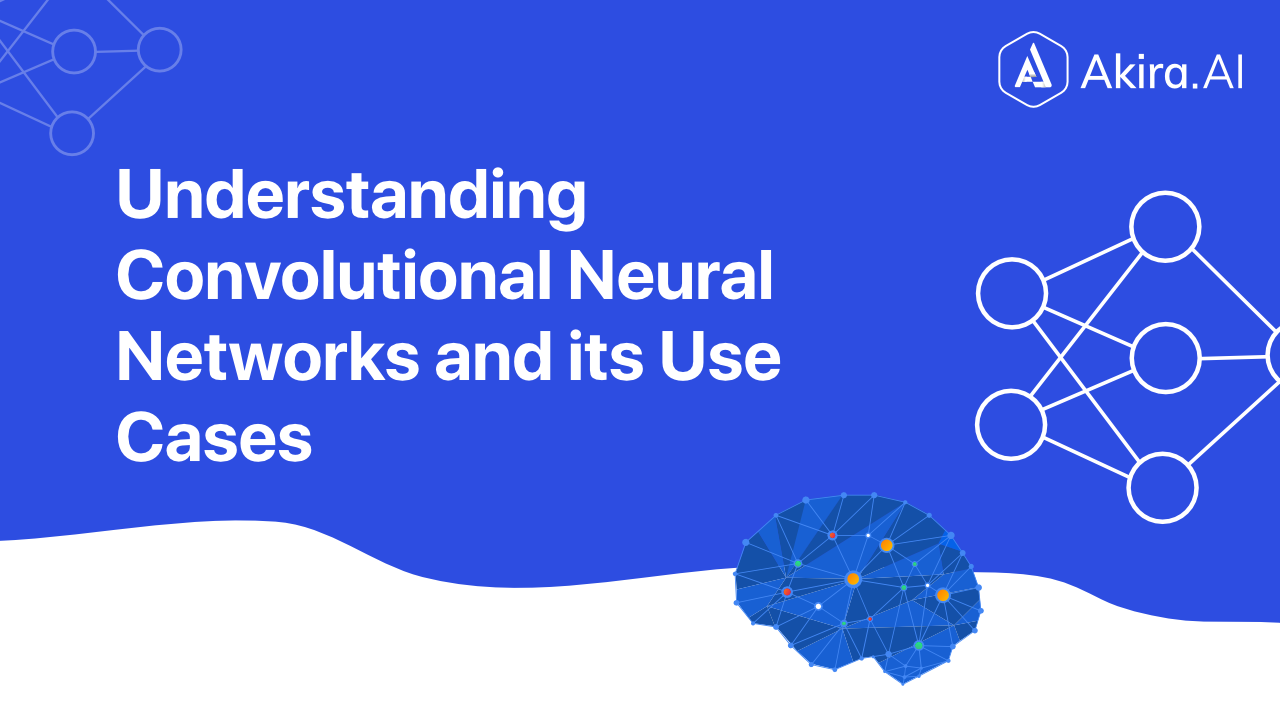Key Insights
Einstein SDR Agent autonomously engages with inbound leads, in natural language, to answer questions, handle objections, and book meetings for human sellers Einstein Sales Coach Agent autonomously engages in role-plays with sellers, simulating a buyer during discovery, pitch, or negotiation calls Accenture will leverage these agents to improve deal team effectiveness, scale to support more deals, and allow their people to focus their time and effort on the most complex deals

Introduction to Convolutional Neural Network
AI has moved far beyond what a human can imagine a decade ago. The outputs which ML models produce are many times a black box's work for a normal human being and even for Data scientists sometimes. Though AI technology is achieving better and more significant goals than a human being can in many fields, the results for image processing still do not match human abilities.
The working of the human brain is very complex. Its cognition and rendering mechanisms are still a mystery. A human brain consists of many layers of interconnected neurons, and AI is trying to mimic this structure with artificial neurons to achieve better or at least similar results as the brain.
In the mid-20s, scientists developed the concept of artificial neural networks, which can learn from data in a theoretical form. It took more than three decades to see a real example: the AI system AlexNet for computer vision.
Click to read about Fairness in Machine Learning Systems
What is Convolutional Neural Network (CNN)?
Convolutional Neural Network (CNN) is an artificial neural network with multiple input and output layers, mainly used for computer vision.
According to Wikipedia In mathematics, convolution is a mathematical operation on two functions that produces a third function that expresses how the shape of one is modified by the other. The term convolution refers to both the result function and the computing process. This concept breaks the image into multiple parts and analyzes them independently.
CNN is layers based system, and the different layers are different mathematical compositions. The main types of layers are convolution, pooling, and fully connected layers.
- Convolutional layers are the features in an input image in a summarized view. At this stage, different mathematical operations work, and the output for the image pixels gets stored in the grid format, called a kernel. The output of this layer is location sensitive.
- A pooling layer is an approach with a down-sampling feature in patches. An optimizable feature extractor is work at each image position to make it highly efficient. Two common pooling methods are average pooling(the average) and max pooling(most activated).
- Finally, the fully connected layer combines the previous layer's output and predicts the best possible results.
In this layer system, one layer's output is input for the other layer, and the complexity increases layer by layer.
Read hare about Metaverse Continuum Challenges
What are the different types of CNN Architectures?
The various types of CNN Architectures are listed below:
LeNet
LeNet is among the first successful CNN projects. This method is also
recommended to beginners as the "Hello World" code. In 1998 the first use case for this deep learning technique was used to recognize handwritten digits.
This model includes five convolution layers and two fully connected layers. Due to the vanishing gradients, the training was not easy for this model, which was later compensated with "Max-pooling" as a connection layer between convolutional layers. This made the training easy by preventing overfitting.
AlexNet (Ilsvrc 2012 winner)
The concept of "Max-pooling" was accepted to the extent that this new AlexNet network combines 5 max-pooling layers,3 fully connected and two dropouts.
Though this architecture is quite similar to LeNet, but much deeper stacked layers. This could accumulate around 60 million features.
ZF Net (Ilsvrc 2013 winner)
The ZF CNN architecture uses other layers between CNN, known as deconvolutional layers, which makes it more efficient than AlexNet.
GoogLeNet
GoogLeNet is the architecture used by Google in the 2014 event of ILSVRC.
It has models with a reduced error rate in comparison with previous winners. Street view house number detection was the most recognized use case.
VGGNet
VGGNet can work on 4096 convolutional features, with 16-layers CNN with up to 95 million parameters, which can be trained on over one billion images.
This is too expensive to train and needs huge data.
ResNet(Ilsvrc 2015 winner)
ResNet architecture is the most profound network with 152 layers, which can take more months to train, and 32 GPU power.
ResNet used CNN successfully to solve natural language processing problems like sentence building or machine comprehension.
Microsoft's machine comprehension system is one of the use cases of ResNet. These networks can be scaled up or down, considering the computational power of GPUs.
MobileNets
MobileNets has made CNNs possible for a mobile device for image processing and low latency.
Click to explore here about Edge AI Architecture
Use Cases
Use Cases of Convolutional Neural Network are listed below:
Decoding Facial Recognition
One of the main applications of this architecture is facial recognition. Using this technique, facial images are broken down into multiple components. The significant components are separating facial features from external features like light or pose and unique facial features.
Document rendering
The documents, including handwritten materials, can be analyzed using CNN architectures. The error rate of comparison of documents with available content is reduced to near zero. Thousands of simultaneous commands run to analyze the handwritten content using CNN, which is very difficult otherwise.
Recognition of Speech
Besides Image processing, neuron networks are also useful for recognizing speech with a huge range of vocabulary and phonics. Emotional detection using CNN is also a focus area for researchers.
Video Processing
Video events like fire or other unusual events can be detected using CNN characteristics. The spatial and temporal information present in videos are the main features when working with Video analysis.
Feedforward neural network
The feedforward neural network is the first and most straightforward artificial neural network. In this, the information moves in only one direction, forward from the input nodes, through the hidden nodes, and to the output nodes. There are no cycles in the network.
Read more about Responsible AI Tools and Framework
Conclusion
The human intentions to bridge the gap between artificial intelligence systems and human capabilities are very much achieved by neural networks. It has applications have increased from image processing to climate change detection. The architecture is also improving since its first version LeNet 1998. With improvements, new use cases arise, reducing errors and providing more accurate results.
- Discover here about Decision Analysis Tools
- Click to know about Bringing AI at the Edge


